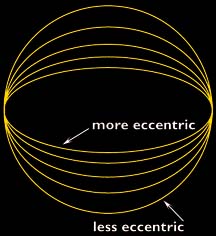This drawing shows the possible geography of Martian water.
Click on image for full size
NASA
The Transfer of Water in Martian History
On Mars, the water is trapped, frozen, within the ground. Nevertheless, there is evidence for running water on Mars.
When the water is melted and released to the surface, it will run from higher ground to lower ground. Because the geography of Mars is so unusual, where the south of the planet is high ground, while the north of the planet is lower ground,
scientist think that this means that water has been drawn slowly from the south to the north of the planet through all of Martian history.
This is a very different pattern of circulation of water than is found on the Earth.
You might also be interested in:

The drawing shows a crossection of the crust, and the unusual altitude variation of the Martian surface. The figure illustrates the depth of frozen ground at various latitudes, called the cryosphere. The
...more
Water is always on the move. Rain falling where you live may have been water in the ocean just days before. And the water you see in a river or stream may have been snow on a high mountaintop. Water can
...more
On this map of Mars, the lightly cratered Tharsis Ridge is shown, as well as the heavily cratered Martian highlands (near the bottom of the picture), and Valles Marineris to the right. The volcanoes are
...more
On Mars, the water is trapped, frozen, within the ground. Nevertheless, there is evidence for running water on Mars. When the water is melted and released to the surface, it will run from higher ground
...more
Separate from the Martian outflow channels, or the river valley networks, are large Martian lakes (600 km, or ~1000 miles across) which exhibit evidence of a periodic and catastrophic release of water
...more
This is an image of fog in a Martian canyon. The presence of fog provides evidence of water, and a water cycle on Mars. More fog has been seen in images returned by Mars Global Surveyor of the south polar
...more
The Martian climate is more influenced by the shape of the Martian orbit than the climate of the Earth is influenced by the shape of the Earth's orbit. The orbit of Mars is more oval-shaped than that
...more
This is an image of a storm moving across the Martian terrain. The camera is looking down upon the storm and the storm front forms a spiral pattern, the same way terrestrial storms are presented on the
...more













